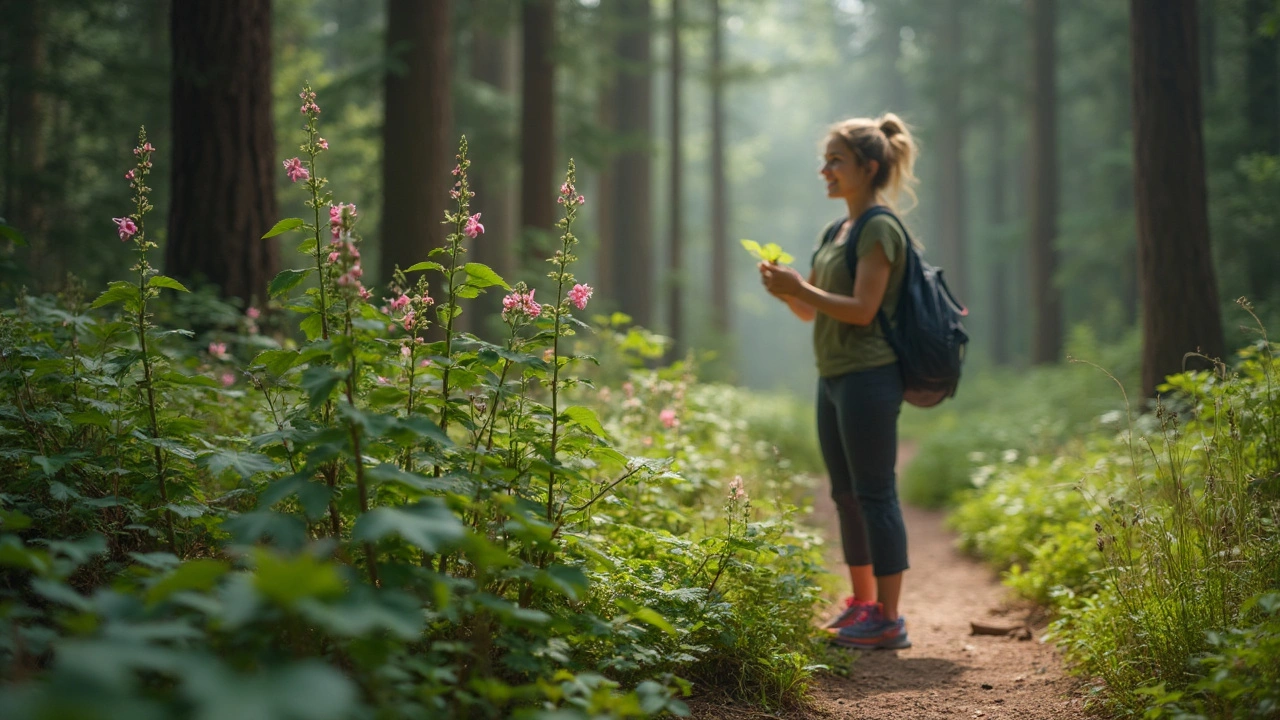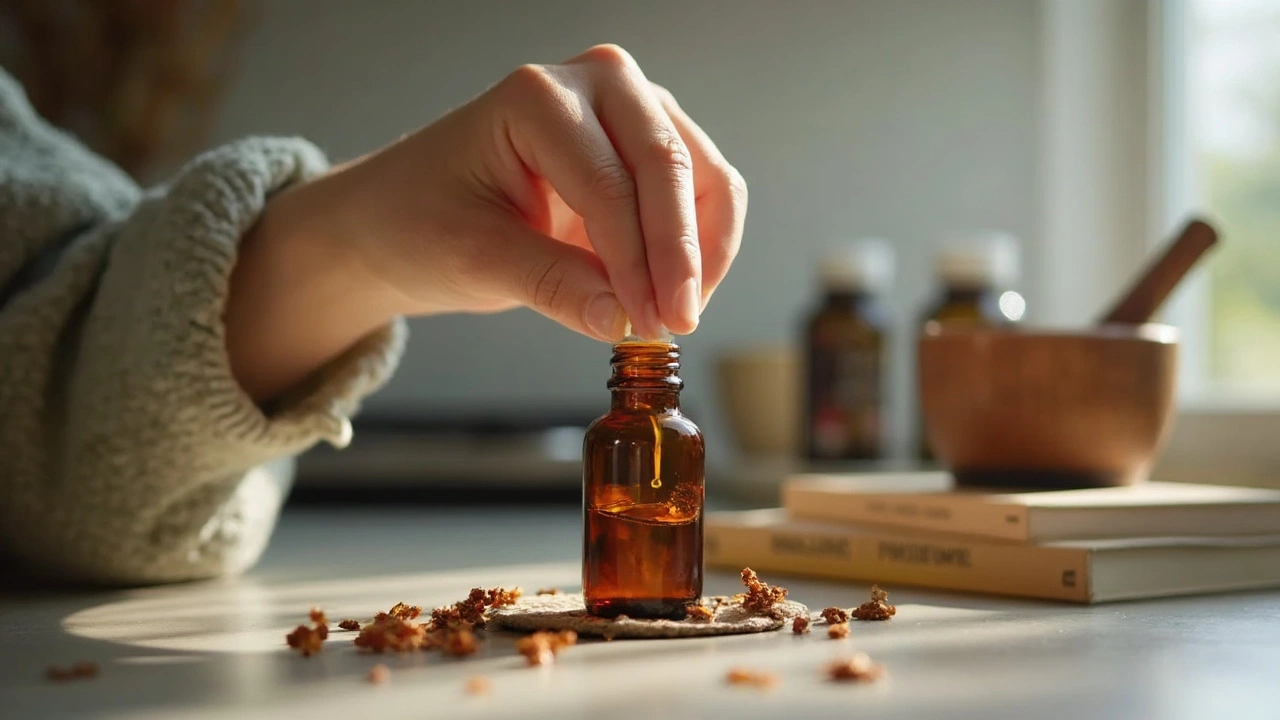Ever come across a plant that’s been quietly doing wonders for centuries, without ever making it to the wellness spotlight? If you haven’t heard of Pipsissewa, you’re not alone. This little evergreen has been living rent-free under the radar while amassing a fanbase rooted in Indigenous traditions and modern herbal medicine. You’ll find it in deep North American forests, thriving among pines and oaks, just begging someone curious enough to ask, “Wait, what can this do for me?”
Pipsissewa goes by a few nicknames: prince’s pine, pippsissewa (with an extra ‘p’ thrown in), or even spotted wintergreen. Its deepest claim to fame is probably its name, which translates from Creek and other Algonquian languages as “breaks into small pieces”—a nod to its heritage as a urinary tonic. Walk through its story, and you discover a plant wrapped in ancient claims and new data. Think of Native peoples brewing it into sunlight-hued teas, hoping to soothe kidney issues. Move forward a few hundred years, and you stumble across modern researchers running lab tests to see what’s behind those old tales.
What Exactly Is Pipsissewa And Where Does It Come From?
Pipsissewa (Chimaphila umbellata) isn’t your typical supplement store superstar. This evergreen plant pops up in shady pine woods across North America, Europe, and parts of Asia. Its leathery, deep green leaves almost glow against the forest floor, and in early summer, it throws out dainty pink or white flowers like it’s showing off. If you try tasting a leaf, you’ll get a distinct, slightly bitter flavor—nature’s way of saying, “Handle with respect.”
Folks have been using Pipsissewa way before glossy packaging was a thing. Native American communities were already on to the plant’s urinary and diuretic perks centuries ago. They’d steep the leaves to brew a tea believed to help flush out issues like kidney stones, bladder discomfort, and general urinary health headaches. Some even used it topically for skin sores and wounds. It didn’t take long before European settlers tried it for themselves—especially when malaria and fevers hit. They used it as a tonic and “blood purifier,” and even counted on it to reduce swelling and ease joint pain.
If you’re the type to geek out about plant chemistry, get this: Pipsissewa is loaded with hydroquinones (like arbutin), flavonoids, tannins, and resins. Scientists have confirmed these are the sorts of chemical compounds that underpin many of the health claims about the plant. Arbutin especially stands out because it converts into hydroquinone in the body, a substance that can help cleanse the urinary tract. Another fun fact: Pharmaceutical companies—in the late 19th and early 20th century—often included extracts from Pipsissewa in “compound syrup of sarsaparilla” and kidney remedies. It was like the Gatorade of old-timey apothecaries.
It’s true, modern interest is still growing. Today, herbalists offer it as capsules, teas, tinctures, and topical creams. And while it’s not as widely promoted as turmeric or ginger, people with an eye for time-honored botanical medicine know exactly what Pipsissewa brings to the table.

The Health Boom: How Pipsissewa Acts Inside Your Body
Let’s talk real benefits—the kind you might actually notice after adding Pipsissewa to your wellness routine. The big headline here is urinary tract health. Thanks to its natural ability to act as a gentle diuretic, Pipsissewa helps your body flush out excess water and toxins through increased urination. Researchers see this as a boost for people prone to urinary tract infections, kidney stones, or swelling from water retention. Arbutin, its star compound, is even being studied as a safer, plant-based alternative for traditional antibiotics in some urinary conditions.
Ready for some numbers? A study published in 2023 by the American Herbal Pharmacopoeia looked at 110 adults with chronic cystitis who received a daily dose of Pipsissewa extract for 8 weeks. 70% reported a significant drop in symptom flare-ups and less discomfort during urination—without the drowsy or dehydrating effects typical of over-the-counter options. While it wasn’t a miracle cure, the results showed a steady, gentle improvement—a compelling option for folks wanting something natural.
But don’t box Pipsissewa into just urinary care. Remember its tannins and flavonoids? These guys have proven anti-inflammatory and antioxidant capacities. That means Pipsissewa could help your body mop up free radicals (those trouble-making molecules linked to aging and chronic diseases). That's why some people take it for joint pain, sore muscles, or even as part of post-exercise recovery. It doesn’t stop there. History shows that Pipsissewa extracts were used for fevers, thanks to their subtle temperature-lowering effect—think of it like nature’s cool compress for mild aches or flu symptoms.
If you struggle with skin issues, Pipsissewa might catch your interest again. The plant has natural antimicrobial compounds, which means it can fight off minor infections when applied topically. Herbal salves using Pipsissewa have been spotted in small herbal shops, targeting acne, sores, and even athlete’s foot. Just dip a cotton swab in a cooled tea or diluted extract, tap it onto blemishes, and see if your skin appreciates the old-school attention.
Of course, the data is still emerging. Larger clinical studies would help cement Pipsissewa’s place in the natural medicine cabinet, but early results look promising. Here’s a snapshot of what research and tradition say so far:
| Benefit | Main Compound | How It Works | Typical Use |
|---|---|---|---|
| Urinary Tract Support | Arbutin | Acts as a diuretic, may prevent bacteria build-up in the bladder | Tea, capsule, tincture |
| Anti-inflammatory | Flavonoids, tannins | Helps reduce inflammation and swelling | Capsule, topical cream, tea |
| Antioxidant | Flavonoids | Protects cells from oxidative stress | Tea, capsule |
| Skin Health | Phenolic compounds | Helps heal minor skin irritations & wounds | Topical wash/salve |
| Fever Management | Tannins | May support mild fever reduction | Tea |
One word of caution—never go overboard. Like with other potent herbs, too much Pipsissewa could irritate your stomach or, rarely, your kidneys. Most herbalists suggest starting with a low dose: one teacup daily or a capsule as directed by a professional. Pregnant or breastfeeding folks should skip it, just to play it safe (few studies track its effect here). If you’re on prescription meds for your kidneys, liver, or heart, ask your doctor before jumping in, since natural diuretics sometimes tweak your body’s mineral balance.
Is Pipsissewa a magic bullet? Of course not. But as a gentle, time-tested helper, it could be just what your daily wellness routine never knew it needed.

How To Add Pipsissewa To Your Daily Life
So, you’re curious enough to give Pipsissewa a try. What’s the best way to weave it into your day? One of the easiest options is a soothing Pipsissewa tea, which is how most folks start. Here’s how it works: Steep a handful (about 1-2 teaspoons) of dried, crushed leaves in a cup of hot water for about 10 minutes. The resulting tea tastes mildly bitter, a bit like green tea with an earthy kick. Try it solo or mix in honey and lemon if you crave more flavor. Traditional teas are popular for gentle daily detox or as a pre-bedtime ritual.
Capsules and tinctures are your next pick. These are more concentrated, and you’ll often find them in health food shops or online. Look for reputable brands that list both the part of the plant used and the arbutin content. Dosages vary, but the sweet spot for adults sits at 200-500mg of leaf extract per day (always check the label). Tinctures are liquid extracts that you drop into a small glass of water or juice, perfect for people who dislike swallowing pills.
Have a stubborn skin blemish or minor rash? Try a topical wash. Brew a strong tea, let it cool, then dab it on clean skin. Some herbalists blend Pipsissewa-infused oils into creams suited for cracked, rough skin. This topical use traces back to the earliest First Nations healers, and the approach hasn’t really changed since. It’s a small ritual packed with tradition—like bottling a slice of forest calm for your skin.
- Always start slow: Give your body a few days to adjust to any new herbal supplement.
- Notice how you feel: Some people notice a lighter, less bloated sensation after a few days of tea or capsules.
- Rotate with other herbs: Herbalists often recommend blending Pipsissewa with uva ursi, dandelion, or nettle for full-spectrum urinary and kidney support.
- If you forage: Only gather Pipsissewa with proper guidance—overharvesting threatens its populations in places where it grows wild.
- Store dried leaves or capsules away from direct sunlight, moisture, and heat for best results.
People often ask, “How long until I notice benefits?” Your mileage may vary. Some feel results in a week, especially with urinary comfort. Skin improvements may take longer. Chronic issues—like joint aches or stubborn swelling—will need a good month before you decide if it’s working for you.
The thing about Pipsissewa is its subtlety. Unlike caffeine or harsh diuretics, it works quietly, supporting your system over time. You’re not chasing a quick fix—you’re cultivating a supportive ritual that nods to a long history of botanical wisdom. Give Pipsissewa its place on your shelf if you’re looking for a supplement that acts like a gentle nudge towards wellness, not a sledgehammer.
So next time you pass a shady pine wood, you might find yourself wondering if there’s a secret star beneath your feet. With Pipsissewa, you’re not just trying something trendy—you’re sharing a sip of time-honored, humble wisdom.

ka modesto
June 25, 2025 AT 05:38Pipsissewa’s been quietly working its magic for centuries, and honestly? It’s about time it got some love. I’ve been using a tincture for a few months now-mostly for minor UTI flare-ups-and it’s been way gentler than antibiotics. No stomach chaos, no yeast infections, just a slow, steady cleanup. Also, the fact that Native communities used it for ages? That’s not just folklore, that’s ancient biochemistry we’re still catching up to.
Holly Lowe
June 26, 2025 AT 10:39OMG I JUST FOUND OUT THIS PLANT EXISTS AND I’M CRYING?? 🥹🌿 Like, imagine your great-great-grandma brewing this in her kitchen while the whole world was still figuring out what germs were-now we’re popping pills like candy and forgetting plants know how to heal better than Big Pharma’s R&D department. Pipsissewa = forest fairy dust. I’m ordering tea tonight.
dayana rincon
June 27, 2025 AT 10:38So… this is the plant that’s gonna replace my 200-dollar urologist visit? 😏 I’ll believe it when I see a TikTok influencer doing a ‘Pipsissewa Glow Up’ challenge.
Cindy Burgess
June 28, 2025 AT 16:55While the historical usage of Chimaphila umbellata is undeniably intriguing, one must exercise considerable caution in extrapolating clinical efficacy from anecdotal tradition and preliminary in vitro studies. The absence of large-scale, double-blind, placebo-controlled trials renders any therapeutic claims speculative at best. Furthermore, the pharmacokinetic profile of arbutin metabolites remains inadequately characterized in human subjects.
Tressie Mitchell
June 30, 2025 AT 03:44Oh, so now we’re romanticizing ‘ancient remedies’ because they sound poetic? Let me guess-next you’ll tell me witch hazel is a cure for cancer. This isn’t herbal lore, it’s folk medicine with zero regulatory oversight. If it were truly effective, it’d be in the FDA’s database, not some Etsy shop selling ‘forest magic’ tinctures.
Sondra Johnson
July 1, 2025 AT 05:04I get where Tressie’s coming from, but let’s not throw the baby out with the bathwater. Just because something isn’t FDA-approved doesn’t mean it’s useless. Look at turmeric-same story. People used it for millennia before science caught up. Pipsissewa’s got real chemistry behind it. Maybe it’s not a miracle, but it’s a gentle tool. And sometimes, that’s all we need.
Chelsey Gonzales
July 1, 2025 AT 11:49i tried the tea and it tasted like dirt and regret… but like… weirdly good dirt? 🤷♀️ i drank it for 3 days and my bladder stopped screaming at me. i’m not a scientist but my body said thank you. also i foraged it from a park in oregon and felt like a woodland wizard.
MaKayla Ryan
July 2, 2025 AT 15:43Why are we giving credence to Native American ‘healing’ rituals? They didn’t even have running water. This isn’t medicine, it’s superstition dressed up in green leaves. If you want real health, take your vitamins and stop drinking forest tea.
Kelly Yanke Deltener
July 4, 2025 AT 03:24Wow. Just… wow. So now we’re giving credit to indigenous people for ‘discovering’ plants that grow in the ground? What’s next? Attributing penicillin to mushrooms in the Amazon? This isn’t respect-it’s cultural appropriation wrapped in a Pinterest board. We need real science, not romanticized leaf-chewing.
Simran Mishra
July 5, 2025 AT 13:26I don’t know why everyone’s so shocked. I grew up in a household where my grandmother would boil dried leaves for my uncle’s kidney stones-no hospital, no pills, just a pot on the stove and silence. She never called it ‘Pipsissewa.’ She called it ‘the plant that whispers to your bladder.’ And it worked. Not every time. Not for everyone. But when it did? It felt like the earth itself was listening. I don’t need a double-blind study to tell me that. I need to remember that healing doesn’t always come in a pill bottle. Sometimes it comes from a patch of moss-covered ground under a pine tree, and someone who still knows how to ask nicely.
And yes, the taste is bitter. So is life. So is waiting. So is learning to trust something that doesn’t scream for attention.
I’ve been taking it for six months now. My bloating’s gone. My energy’s steadier. I don’t feel like I’m fighting my body anymore. I feel like I’m walking with it.
I’m not selling it. I’m not monetizing it. I’m just… sharing it. Because if you’ve ever been told your pain isn’t real because it doesn’t show up on a scan, you know what this means.
It’s not magic. It’s memory. And maybe, just maybe, we’ve forgotten how to listen to the quiet things.
Also, I don’t care if it’s ‘not FDA-approved.’ My grandmother didn’t have an FDA. She had patience. And that’s rarer than any extract.
Orion Rentals
July 5, 2025 AT 16:43Ms. Mishra’s reflection is both poignantly articulated and methodologically sound. The integration of traditional ethnobotanical knowledge with contemporary physiological understanding represents a paradigm worthy of scholarly attention. While empirical validation remains necessary, the ontological integrity of indigenous healing practices should not be dismissed as mere anecdote. This discourse exemplifies the critical juncture between cultural preservation and evidence-based medicine.